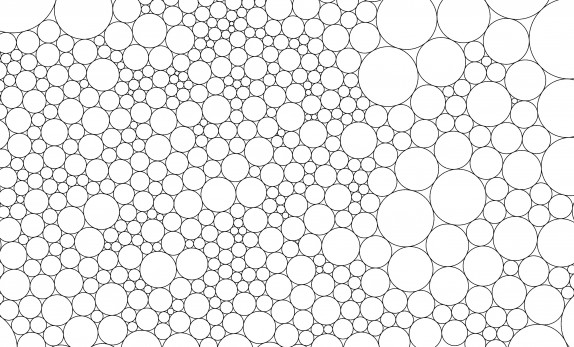
This problem is relevant to a number of scientific disciplines, and has received significant attention. Many of these problems, when the container size is increased in all directions, become equivalent to the problem of packing objects as densely as possible in infinite Euclidean space.
3.3.2 Different rectangles in a rectangle. 3.3.1 Identical rectangles in a rectangle. 3.1.3 Circles in isosceles right triangle. 1.3 Packings of Platonic solids in three dimensions. 1.2 Sphere packings in higher dimensions. In some variants the overlapping (of objects with each other and/or with the boundary of the container) is allowed but should be minimized. More commonly, the aim is to pack all the objects into as few containers as possible. In some variants, the aim is to find the configuration that packs a single container with the maximal density. Usually the packing must be without overlaps between goods and other goods or the container walls. 
The set may contain different objects with their sizes specified, or a single object of a fixed dimension that can be used repeatedly.
A set of 'objects' some or all of which must be packed into one or more containers. 'containers' (usually a single two- or three-dimensional convex region, or an infinite space). Each packing problem has a dual covering problem, which asks how many of the same objects are required to completely cover every region of the container, where objects are allowed to overlap. Many of these problems can be related to real life packaging, storage and transportation issues. The goal is to either pack a single container as densely as possible or pack all objects using as few containers as possible. Template:Puzzles Packing problems are a class of optimization problems in mathematics that involve attempting to pack objects together into containers. The diagnostic message should appear when rendering the svg file as in Figure 1 overlap Figure 1: Example of rendering of an svg file Show transcribed image text Expert AnswerĪnswer to Packing Circles Rectangles Really Appreciate Someone Help Provided Coding Checkpackcpp Inc Q29546555. overlap if the shapes fit in the domain but some of the shapes overlap – does not fitif any of the shapes does not fit in the domain. all shapes fit in the domain and there are no overlaps between shapes. The program should write on standard output the svg representation of all the shapes, and include in addition the following diagnostic message – ok if the configuration is valid, i.e. Circles and Rectangles can appear in any order in the input. Circles of arbitrary position and radius are read from standard input Rectangles of arbitrary position and sizes are read from input. The domain is a rectangle of fixed size (600×500). See ki/Scalable Vector Graphics The positions and sizes of the shapes are specified using integers. An svg file can be visualized using a browser such as Firefox, Safari, Chrome or Internet Explorer. in electronic device design when packing electronic components on a printed circuit board The program should create a visual representation of the domain and shapes as a scalable vector graphics (svg) file. Rectangle r2(llcorner+Point(20,30),width,height) Ĭout << boolalpha << r1.overlaps(r2) < 
Point(int xin, int yin) : x(xin), y(yin) Shape* p = new Rectangle(Point(x,y),w,h) (I really appreciate it if someone can help me with this!)

(Solved) : Packing Circles Rectangles Really Appreciate Someone Help Provided Coding Checkpackcpp Inc Q29546555.







 0 kommentar(er)
0 kommentar(er)
